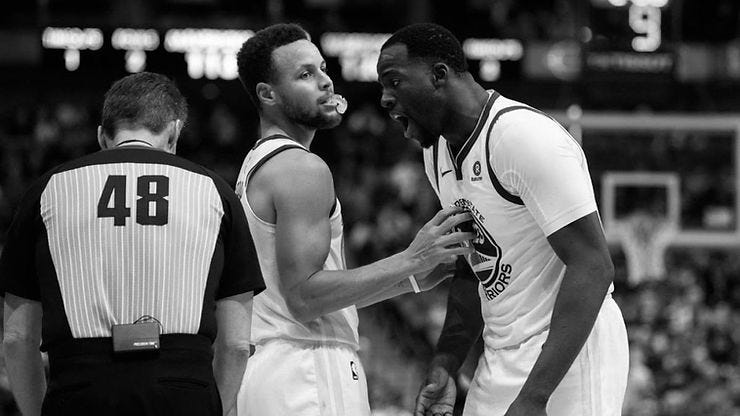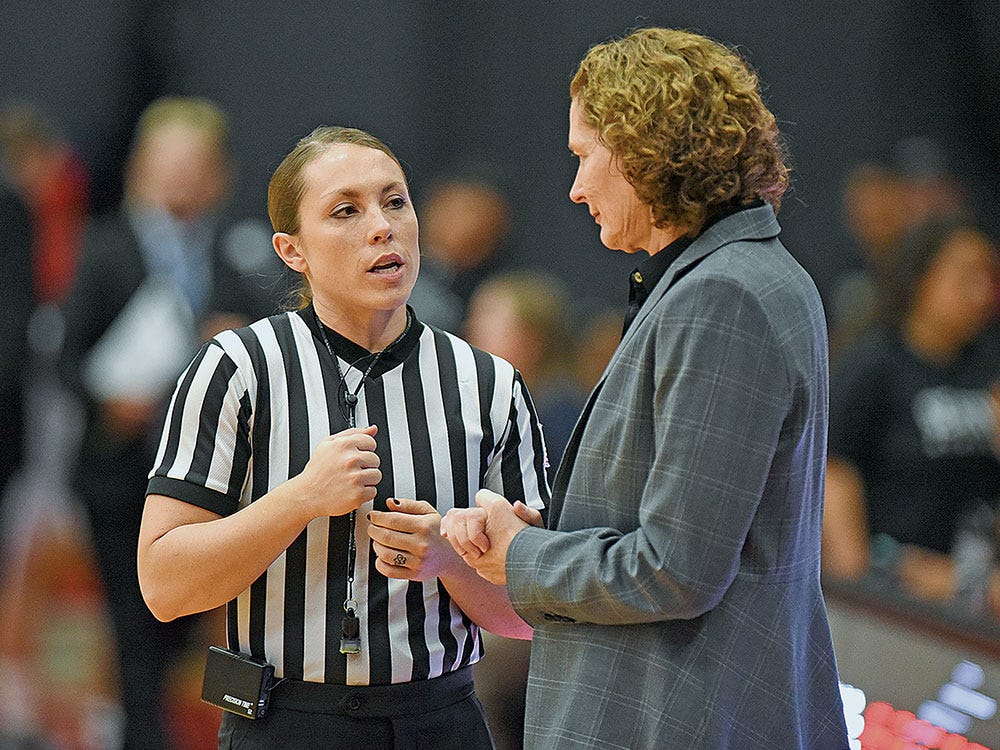During their time on the court, referees are constantly confronted with a multitude of challenges. Whether it's swiftly making judgment calls or skillfully handling player and coach interactions, the games require a delicate balance of skills, intuition, and emotional control. At the heart of mastering these challenges lies the concept of self1 and self2 –two distinct aspects of a referee's cognitive processes, as explained in Timothy Gallwey's important work "The Inner Game of Tennis”. Self1 embodies the conscious mind, rooted in rational analysis and critical thinking, while self2 represents the subconscious, drawing upon intuition, experience, and instinct. Throughout this article, we'll delve into the critical importance of striking the right balance between self1 and self2, particularly concerning emotional control and the art of decision-making in the realm of basketball officiating.
Understanding Self1 and Self2
In the context of basketball officiating, self1 represents the conscious mind – the analytical thinker who processes information, analyzes plays, and makes critical decisions. Self1 is essential for understanding the rules of the game, applying them accurately, and maintaining fairness and consistency on the court. However, self1 can also interfere to the performance being judgemental and can be a source of stress, doubt, and overthinking, especially in high-pressure situations. Timothy Gallwey explains and sums self1’s impact as following;
On the other hand, self2 represents the subconscious mind – the intuitive, instinctual aspect of a referee's psyche. Self2 operates without conscious interference, relying on years of experience, training, and muscle memory to make split-second decisions. It's the part of the referee's mind that allows them to "feel" the flow of the game, anticipate plays, and react instinctively to fast-paced action.
Timothy Gallwey found a clever strategy to silence the interference of self1 by providing instructions to a tennis player such as "focus on the seams of the ball" rather than "try to hit it in the center of the racket." By directing the student's attention towards something seemingly inconsequential to successful performance, Gallwey found a way to quiet the nagging voice of self1 and allow self2 to take over. As a result, his students' techniques saw remarkable improvement.
In basketball officiating, referees can use a similar trick to make better decisions during games. Instead of worrying too much about making the right call, they can focus on small details of the game, like how players move, where the ball is or what can happen next. This helps them ignore distracting thoughts and doubts. Then, their natural instincts, called self2, can guide them to make better decisions.
For example, let's say a referee has to decide if a player stepped out of bounds while driving to the basket at the end of a close game. Instead of stressing about it and feeling the pressure of the heaviness of the call, the referee should pay attention to the player's feet and the path of the ball. This helps them ignore any doubts or pressure and lets their instincts make the right call based on their experience. As a team, during timeouts or game breaks, we need to remind ourselves of what's happening in the game, what to expect, and what might occur before the next break to have whole team on court, away from pressurizing factors. Having these discussions, either as a team or through self-talk, is of great importance for fostering teamwork and is essential for good officiating.
Emotional Control and Decision-Making
One of the most critical aspects of basketball officiating is emotional control – the ability to remain calm, composed, and focused amidst the intensity of the game. Emotional control is closely tied to the balance between self1 and self2. When self1 is dominant, referees may become overly analytical, second-guessing their decisions, and succumbing to pressure from players, coaches, and fans. This can lead to hesitation, indecision, and ultimately, poor officiating.
However, when self2 is allowed to operate freely, referees can tap into their instincts, trust their judgment, and maintain a clear, focused mindset. This doesn't mean ignoring the rules or making impulsive decisions but rather harnessing the power of intuition and experience to make confident, decisive calls. By quieting self1 and trusting self2, referees can achieve a state of "flow" – a mental state characterized by heightened focus, optimal performance, and a sense of effortless control.
On the court, we feel this when we officiate games with more experienced or admired referees. We don't want to make any mistakes, but that's when our inner critic self1 takes over and begins reminding us: 'You have to be more careful. Don't make any silly calls,' etc. Not surprisingly, we end up making more mistakes and underperforming in those situations.
Judgemental thought chimes in, tells the body to work harder to fix the mistake. The body tightens up and tries harder, but the mistakes keep happening, making the mind louder, and the cycle continues. Preventing this requires seeing your skills and performance exactly as they are. Be descriptive and stick to the facts without adding stories. This approach will speed up the natural learning process that your body is naturally good at. To quiet the mind and trust your body, start by blocking intrusive, judgmental thoughts. Focus directly on the experience as it is, then simply state the facts and allow your body to react naturally. Get out of your head and drop down to your body.
Striking the Right Balance
But how can self2 learn and develop, if we silence the analytical thinking part of our brain? While self1, associated with critical thinking and analysis, plays a crucial role in learning and development, it's essential to strike a balance between self1 and self2 to optimize performance. Finding the right balance between the two is a continuous process that requires self-awareness, mindfulness, and practice. Referees must learn to recognize when self1 is becoming overly dominant and causing them to second-guess their decisions.
Here's how self2 can learn and develop even when self1 is quieted:
Initial Learning: During the initial stages of learning a new skill or task, self1 is actively engaged in processing information, analyzing feedback, and making adjustments. Once the fundamentals are understood, self1 can step back, allowing self2 to take over and execute the task more intuitively.
Feedback Integration: While self1 is important for processing feedback and making improvements, self2 can integrate this feedback more naturally and effortlessly during practice and performance. By quieting self1's tendency to overanalyze, individuals can allow self2 to learn from experiences and adapt more seamlessly.
Visualization and Mental Rehearsal: Quieting self1 allows individuals to engage in visualization and mental rehearsal techniques more effectively. By vividly imagining successful outcomes and experiences, individuals can prime self2 for optimal performance and skill development.
Reflection and Adjustment: After the task or performance, self1 can re-engage to reflect on the experience, identify areas for improvement, and make adjustments for future practice sessions. This cycle process of quieting self1 during execution and re-engaging for reflection and adjustment allows for continuous learning and development.
More to read;
Releasing self-judgment to perform better — Dr. Daya Grant
Conclusion
As basketball referees, finding the right balance between self1 and self2 is essential for success. By harnessing the analytical power of self1 and the intuitive wisdom of self2, referees can make confident, decisive calls, maintain emotional control, and ensure fairness and integrity on the court. Through self-awareness, mindfulness, and emotional intelligence, referees can elevate their officiating game to new heights, creating a positive and empowering experience for players, coaches, and fans alike.






